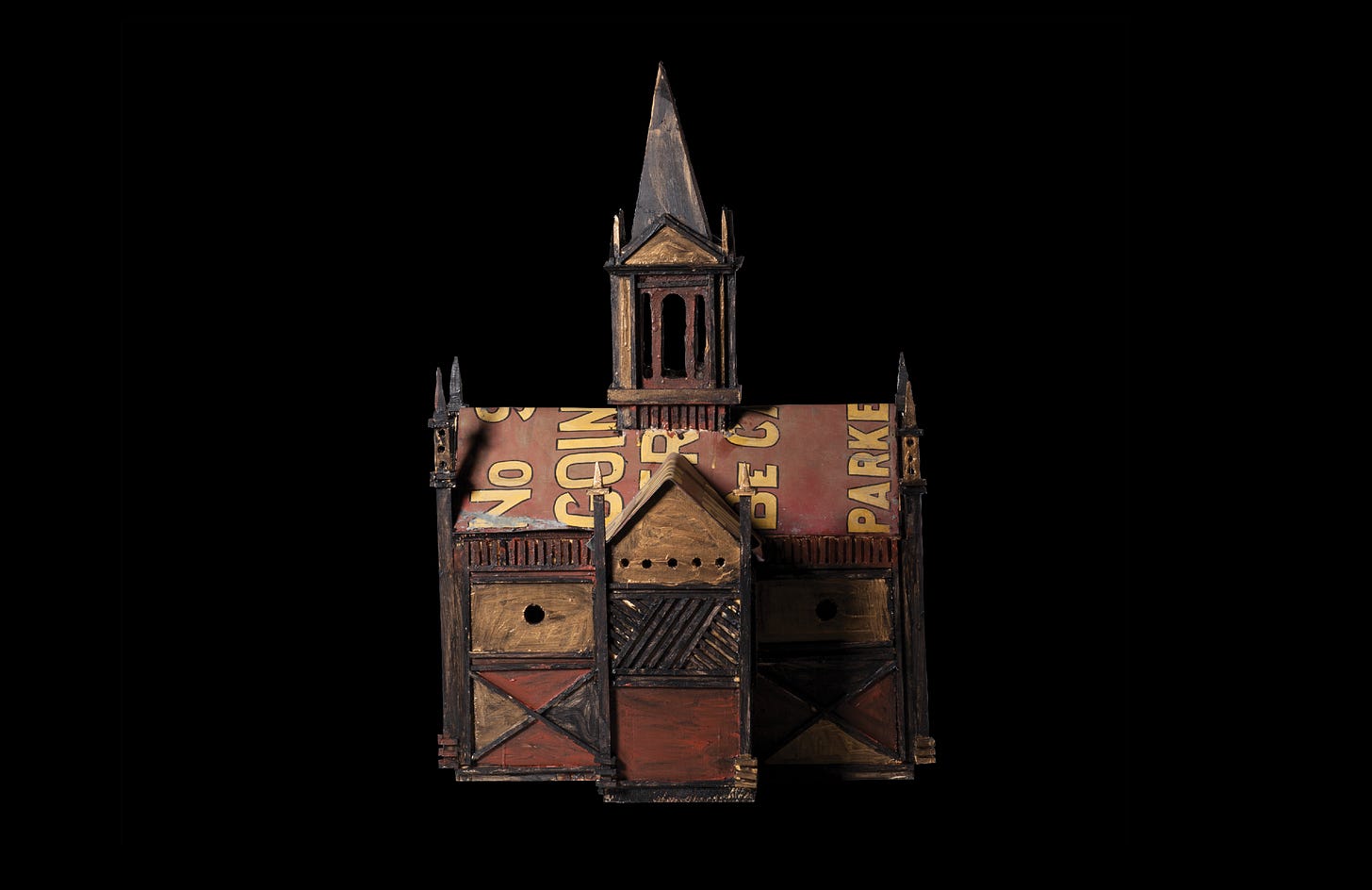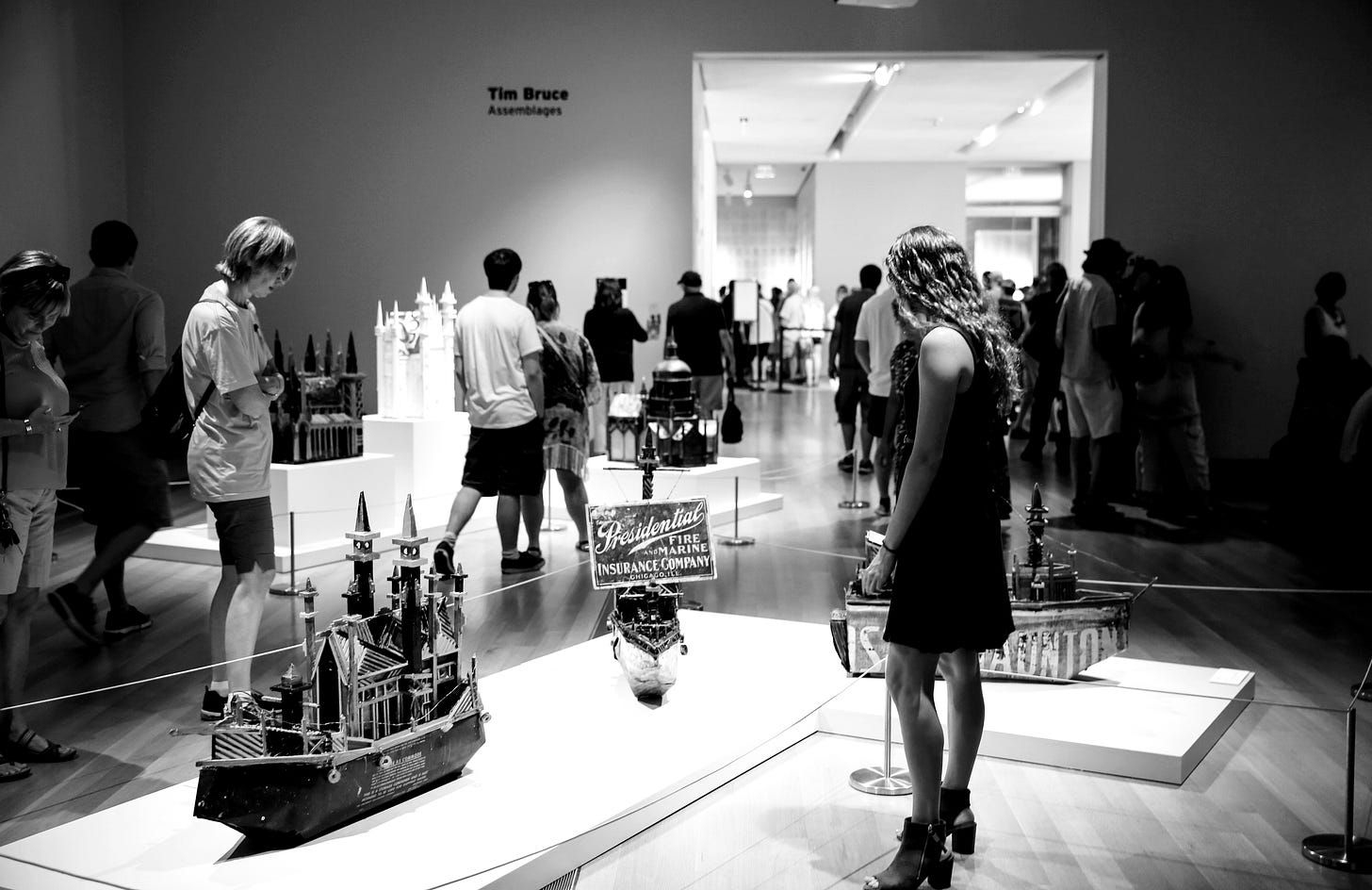Make the work you never planned to make.
A story of letting go of expectations, and letting curiosity lead the way.
In design, we’re trained to start with a plan. Everything has a purpose—a brand system, a color palette, a layout grid. There’s a structure to it all.
But art doesn’t work like that. Neither does inspiration.
Creative progress, I’ve learned, often shows up the moment you stop chasing it.

I learned that, in part, from growing up surrounded by painting. My mom trained as a painter in college. My dad, a designer by trade, discovered painting and teaching later in life.
My mom’s early canvases hung all around our house—bold, textured, full of movement. I loved the color. The marks. The rhythm of brushstrokes you could still see after the paint dried.
But I never painted. Not as a kid nor in college. Not even later, when I had the time, the tools, and good reasons to try.
It wasn’t because I didn’t want to. I did. I just didn’t know what to paint. I was waiting for an idea that felt big enough—serious enough—to be worth doing.

When I thought about painting, I thought of Picasso’s 1907 Les Demoiselles d’Avignon—a painting that shocked the art world for its energy and “ugliness.” I loved that it was unfinished.
It became a snapshot of a turning point, when one way of thinking about art arrived, and another left.
That, to me, was “real art.” Important. Radical. Undeniable.
I wanted to make something great. So I never started.
My own expectations kept me from painting anything at all.
I didn’t have that same problem when it came to design.

Early in my career, I began to notice the things that inspired me—anything that made me look twice or think, “I wish I had done that.”
My inspiration wasn’t in galleries or textbooks. It was in alleys and junk shops—hand-painted signs, weather-worn labels, and ephemera with type worn down by time and use.
One day, almost by accident, I picked up an old metal sign and some scrap wood and started building something. I wasn’t trying to make art. I just wanted to see what would happen.
What came out wasn’t what I expected. It didn’t look like “art.”
But it felt right.
It didn’t match my old idea of what painting should be. But it didn’t need to. It was something else entirely—more playful, more physical, more like construction than composition.
And because I had no expectations, I felt free to explore.

With no formal training in sculpture or woodworking, I used what I had: old house paint, discarded wood, rusted metal signs, a saw, a hammer, a drill, and a basement corner to work in.
Every material was either found or salvaged.
At first, I thought the limitations would hold me back.
But I quickly realized—they were the point.
Scrap wood doesn’t offer an infinite number of options. It demands decisions. A warped edge becomes part of the composition. A missing corner might suggest something new. Constraints didn’t narrow my creativity—they shaped it.
I wasn’t making the art I expected to. I was making things I liked.
And then making more of them.
When I had a small body of work, I showed it to an abstract painter I knew in New York. He had built his career on large-scale, expressionistic canvases. I had designed a book for him years earlier and respected his knowledge of the market.
He didn’t see what I’d made as sculpture or even art. “It’s very religious,” he said. “It feels more like craft.”
Craft wasn't my idea of art. And I wasn’t religious.
I was struck by the disconnect. I hadn’t thought of the pieces that way at all.
My friend saw the work through the lens of his own expectations. I realized I had finally stopped letting my expectations constrain what I made.

To me, the work had more to do with my childhood visits to my grandfather’s farm with its old barns and patchworks of worn and weathered wood.
From a distance, I saw sculptural shapes on the horizon of the farm. And up close, I found holes in the granary walls covered up with old metal signs and license plates.
I hadn’t set out to make sculpture. Or craft. Or anything, really.
I was just following an impulse. Using the materials around me. Letting memory, texture, and instinct guide the process.
What mattered to me wasn’t the label. It was that I had made something that felt like mine.
The more I produced, the more the work began to take on a life of its own.
I didn’t need to be good. I just needed to stay curious.
Assemblages weren’t something I had considered. And because I hadn’t, I had no expectations.
And that made all the difference. I explored different forms at will.
For example, ships weren't part of my childhood, and I wasn't a sailor. But I had studied in Newcastle upon Tyne, England, and I remember the shipyards, where massive ships were being built along the Tyne.
And later, while traveling in Holland on my first Christmas away from home, I saw model ships floating in Dutch churches, suspended from the ceilings.

Some series emerged from the scraps of earlier work. Fragments of boards became owls and deer heads. Odds and ends turned into geese. Patterns I never saw before revealed themselves once I stopped looking so hard.
I hadn’t planned any of that.
But memory has its own kind of intention.
That’s the thing: intention isn’t always there at the start. Sometimes it sneaks in once your hands are already moving.
Some of these pieces ended up in museum shows. To me, that’s not a story about validation. It’s a story about letting go.
Because the real shift wasn’t about how others saw the work; it was about how I stopped trying to control what it should be.
Waiting to figure out what you’re supposed to make?
You don’t need a grand plan. You don’t need a big idea. You just need to start. With what you have. With what draws your attention.
Even if it’s a rusted sign in an alley.
Intention isn’t something you set. It’s something you uncover—by showing up and letting the work shape you.
Let go of expectations. Curiosity is all you need to start today.









This story is delightful ~~ the connections from your childhood that influenced your builds. It's refreshing that you remain curious. Perfect for a new bumper sticker ~~ Stay Curious.